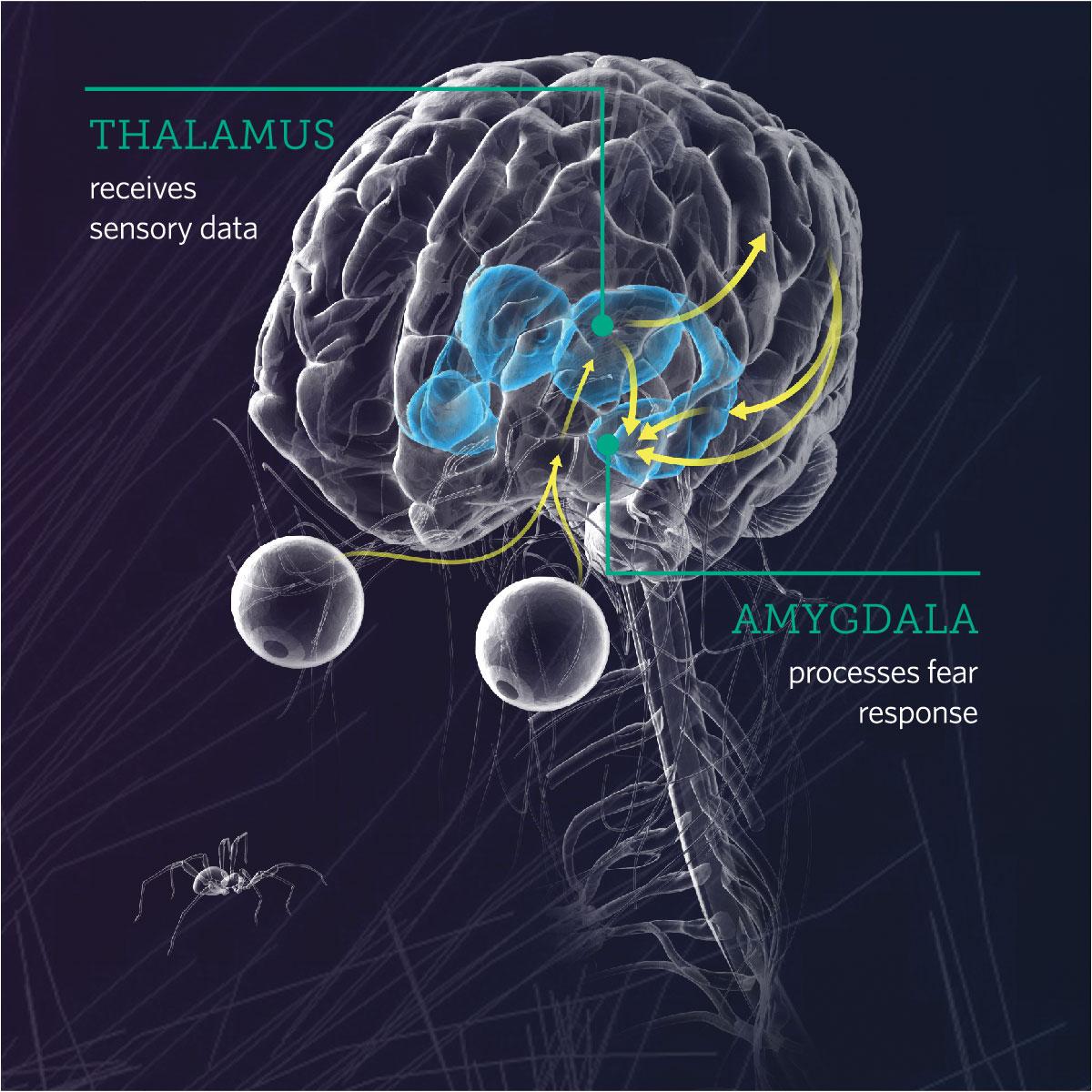
Date:
It’s a dark and stormy night. Boom! You hear a loud crash. You see a flash of movement. The fear sets in. Your brain has jumped into alert mode.
Fear is an essential function of the brain. Throughout human evolutionary history, fear has kept us alive. How does it work? A cascade of reactions in your brain and body helps you prepare for danger. Sensory information—like what you see and hear around you—first zips straight to a part of your brain called your thalamus. The data then branches off into two different routes.
A shortcut leading directly to the amygdala allows for immediate reaction. The brain activates various glands, which in turn produce a surge of hormones that dramatically affect your body. Your heart beats faster. Your breathing speeds up. Your muscles tense, prepared to attack your enemy or run away as fast as you can. This is what scientists call the “fight or flight” response.
The second, longer route travels through the cortex and hippocampus. Now you have a chance to match the incoming sensory data to past memories. Do you recognize the sound? Do you remember anything around you that might have moved? The extra processing results in a calmer, more thoughtful response, so you can decide whether your fear is justified.
For example, your initial reaction to the sudden crash may have been to jump up, ready to run. But then memory kicks in, and you recognize the moving shape as your dog. Your brain calls off the fight or flight response.
Your fear pathway also intersects with your sense of reward. Sometimes feeling a little scared can be fun! The balance between the two differs for everyone—the same experience can be exhilarating for one person and terrifying for another. With my brain, I’ll race you for the front seat of a roller coaster, but I’ll be hiding under a blanket during a horror movie. Where does your brain draw the line?
Come visit our Your Brain exhibit or check out this interactive feature to explore more about fear.


